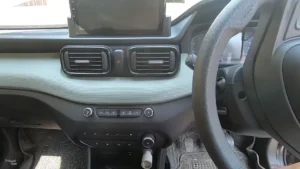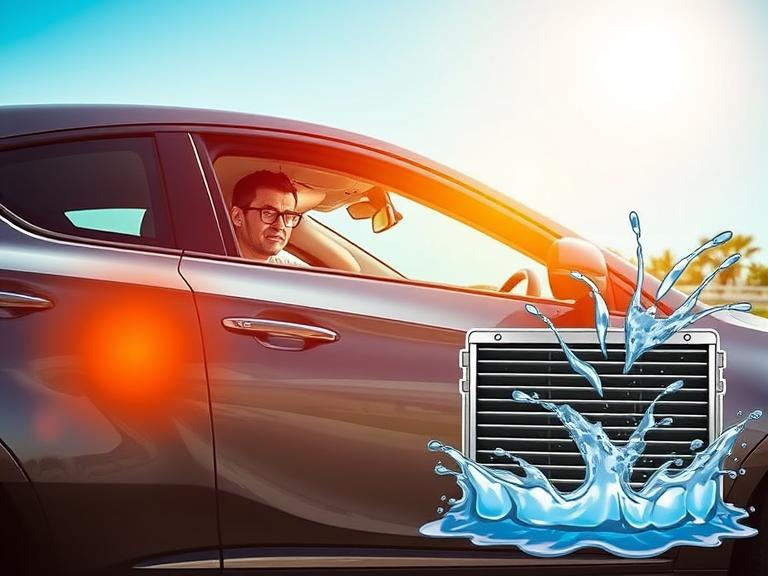Why Your Car AC Doesn’t Cool Properly in Summer? Real Reasons + One Powerful Trick
Summer hits hard — and your car’s AC gives up even harder.
One moment you’re hoping for cool air after stepping into a scorching hot car, and the next — warm air blows at your face. You take it to a mechanic, and guess what they say?
“Sir, your AC gas is low. Let’s do a top-up.”

But wait — does AC gas really vanish every year? Should you top it up annually? Or is it just a money-making trick? Let’s bust the myths and get to the facts — and yes, we’ll share one powerful trick to instantly boost your AC’s cooling without spending a single rupee!
First, How Does Your Car’s AC System Work?
Let’s simplify it.
Your car AC has 4 major components:
-
Compressor: Squeezes the gas and circulates it (engine-driven)
-
Condenser: Cools the gas — usually placed in front of the radiator
-
Expansion Valve: Regulates the flow of gas into the cabin
-
Evaporator Coil: Hidden under the dashboard, blows cold air into the cabin
All the refrigerant (AC gas) runs through sealed pipes — meaning it doesn’t “get used up.” So where does it go? Let’s answer that next.
So Where Does the Gas Actually Go?
The truth: It doesn’t get used — it leaks.
That’s right. AC gas is not like fuel. It doesn’t burn out.
So if it’s low, something’s wrong — there’s a leakage.
Leaks usually happen:
-
At pipe joints or seals
-
In the condenser (which may develop cracks)
-
Or inside the evaporator coil, which is under the dashboard and hard to detect
Even micro-leaks can cause the gas to escape slowly. It might take weeks or months, but eventually, the gas will disappear.
Should You Top-Up AC Gas Every Year?
Absolutely not.
If a mechanic insists on gas top-up every summer — walk away.
✅ When gas top-up makes sense:
-
AC cooling is completely gone
-
And a proper leak test confirms refrigerant loss
❌ When it doesn’t:
-
Every year without inspection
-
Mild cooling issues caused by other factors (like clogged filters or fan issues)
What Happens During a Proper AC Service?
Let’s clear a major myth:
AC servicing ≠ Gas top-up
A real AC service includes:
-
Cleaning the condenser (dust blocks heat exchange)
-
Cleaning or replacing the cabin filter
-
Cleaning the evaporator coil inside the dashboard
-
Vacuuming the system properly before refilling — to remove any moisture or air
If these things are done right, you may not need to touch the gas at all.
Why You Shouldn’t Mess With Factory-Filled Gas
If your car is new, and AC was working fine until recently, avoid opening the system.
Factory-filled refrigerant is:
-
Of high purity
-
Filled in controlled vacuum conditions
-
Done using automated machines and exact parameters
Once disturbed, it’s almost impossible to get that same quality back in roadside servicing. So unless there’s verified leakage, don’t let anyone touch the gas.
And Here Comes the Powerful Trick You Must Try
You’re stuck in traffic, engine is hot, and AC starts blowing warm air. Here’s what you do:

- Start the engine
- Set the AC to full blower and recirculation mode
- Step outside
- Take a bottle or mug and pour room temperature water directly onto the condenser (the radiator-looking part in front of the car)
✅ What this does:
It cools the condenser instantly, helping the refrigerant condense more effectively — and you’ll notice AC cooling improves within seconds — without any mechanical work or expense.
Important: Don’t Fall for the “Gas Top-Up Scam”
Yes — it’s real. Some mechanics use “low gas” as an excuse when they can’t figure out the actual issue.
Always ask for:
- Leak test results
- Proof of diagnosis
- Details of what’s being replaced or cleaned
Remember, a well-informed car owner is hard to fool.
Final Advice
Next time your AC doesn’t cool:
-
Clean the condenser and filters first
-
Check fan operation (a faulty radiator fan can reduce AC performance)
-
Get a leak test before a gas top-up
-
And definitely try the “water on the condenser” trick before visiting the workshop

